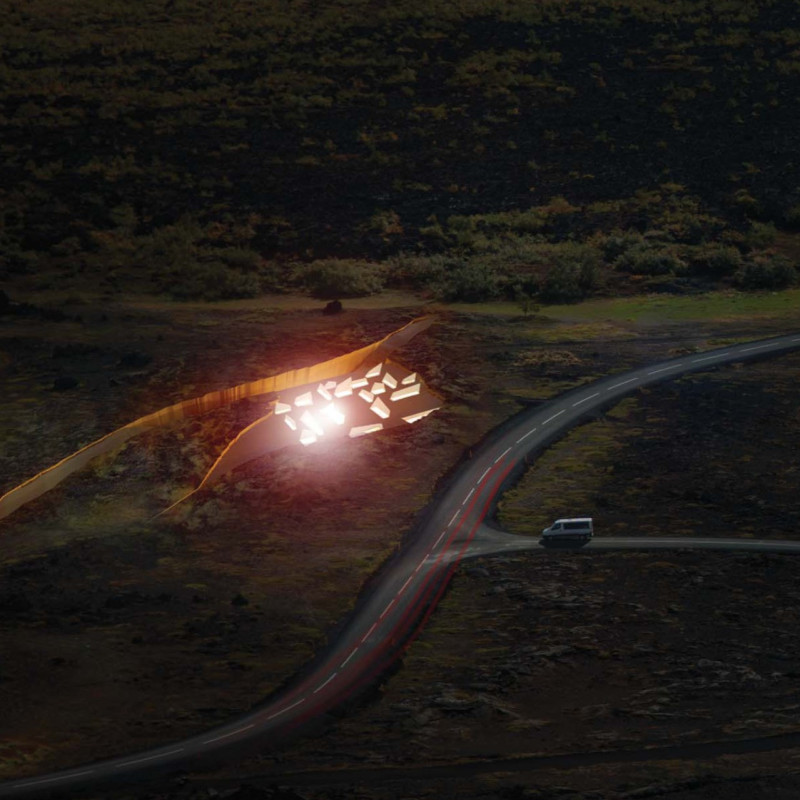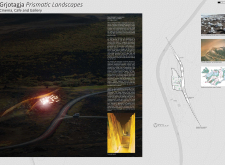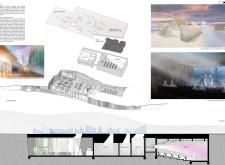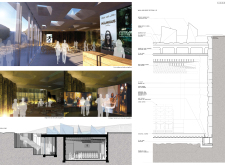5 key facts about this project
The architecture of the project is characterized by a seamless integration with nature. It employs materials that reflect the local environment, with extensive use of glazing allowing for a visual connection to the outside. This choice of materials not only enhances the user experience by inviting natural light into the interior spaces but also offers breathtaking views of the picturesque surroundings. The substantial use of concrete provides robustness and durability, critical factors in a region marked by varying weather patterns. Alongside this, the incorporation of wood adds warmth and texture, creating a welcoming atmosphere in the interior areas.
Key components of the project include the entry and ticketing area that serves as the first point of interaction for visitors, designed to facilitate smooth movement into the building. The cinema space is meticulously planned to ensure a high-quality viewing experience, focusing on both acoustics and visual comfort. The interior features naturally exposed rock walls, reflecting the geological context and enhancing the immersive experience for attendees. In the multifunctional café and gallery, the design promotes a fluid interaction between the space and its occupants, encouraging both social engagement and individual reflection. These areas are arranged thoughtfully to allow flexibility for various events, such as exhibitions or community gatherings.
The studios and additional amenities within the project foster artistic collaboration, supporting the local creative community and providing opportunities for workshops and exhibitions. This holistic approach creates dynamic environments that invite diverse cultural activities, ensuring the space is vibrant and alive with creativity.
Unique design approaches play a crucial role in differentiating this project from conventional architecture. The deliberate alignment of the building's form with the surrounding topography highlights an organic design philosophy. Instead of a stark juxtaposition with the landscape, the structure enhances the experience of the Icelandic nature, appearing as if it has grown from the ground itself. Green roofs are integrated into the design, which not only serves aesthetic purposes but also reinforces the project's commitment to sustainability by promoting biodiversity and reducing the overall ecological footprint.
Moreover, the innovative use of skylights and large-scale glass elements allows natural light to play a significant role in spatial experiences throughout the building. This design decision not only aids in reducing energy consumption but also reinforces the connection between the interior spaces and the expansive views outside. These aspects create a sensory-rich environment conducive to relaxation and creativity.
As the Grjotagja Prismatic Landscapes project unfolds, it stands as a testament to the potential of architecture to harmonize with its surroundings while fulfilling functional needs. It champions the idea that buildings can serve as vessels for cultural expression and communal participation. For those interested in the intricate details and sophisticated concepts within the design, exploring the accompanying architectural plans, sections, designs, and ideas offers an invaluable perspective. Delving deeper into the project presentation provides further insights into how thoughtful architecture can enrich our interactions with nature and community.


























